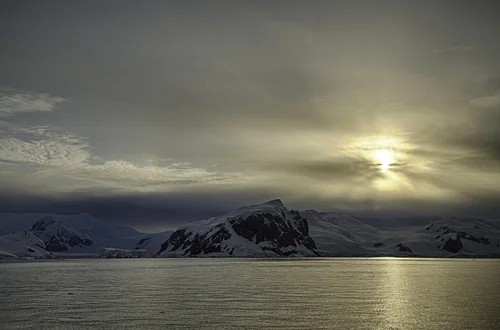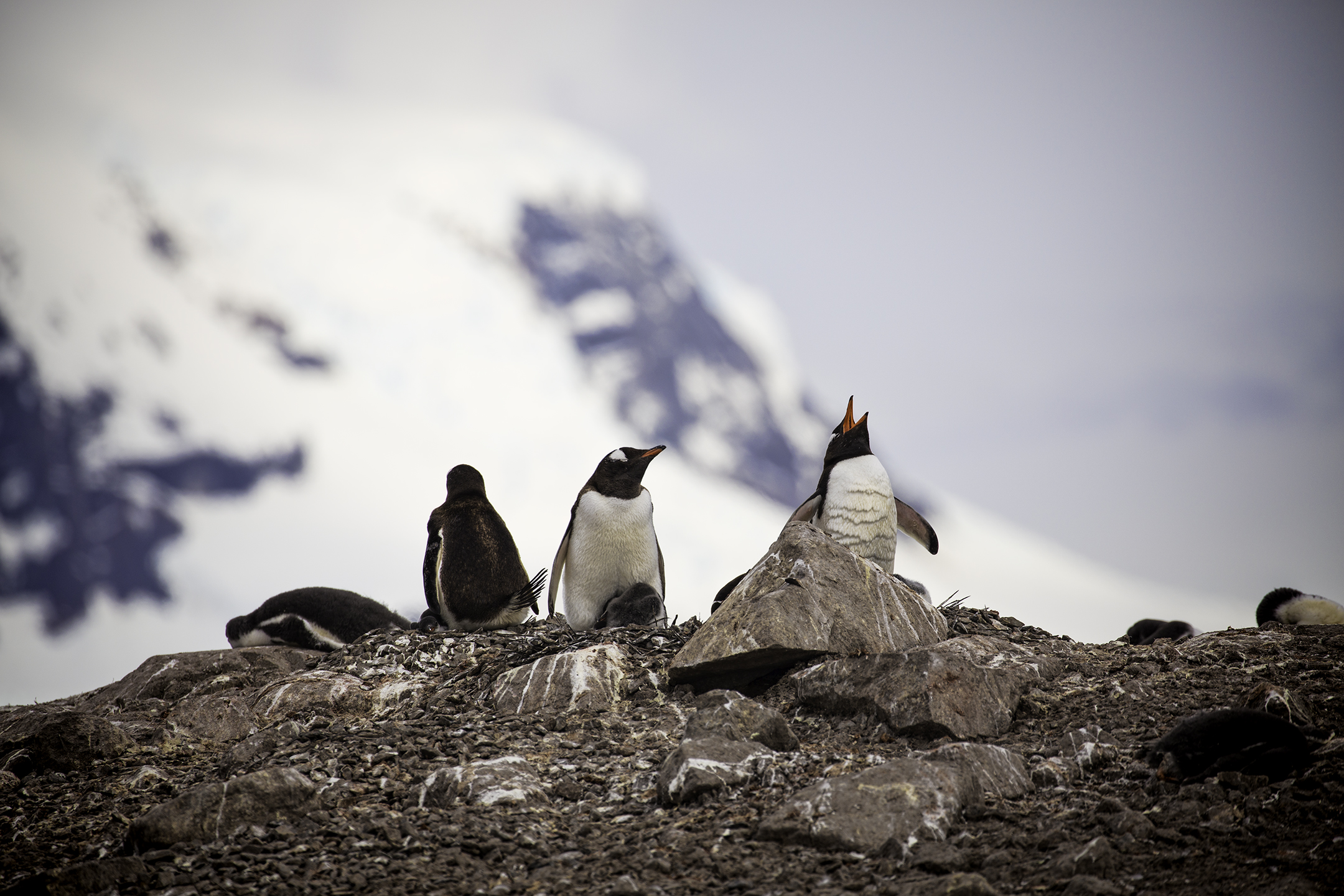The Sea Explorer has made it down the west coast of the Antarctic Peninsula to Advord Bay, an invagination that is only 30 miles from the Wedell Sea on the east side. As we penetrate deep into this cove, I'm captivated by the splendid mountains and glaciers that line the landscape. Castellated icebergs are plentiful, and I start to discern outlines of wildlife in the distance.
The scenery here puts me in an otherworldly mood. Multiple glacier fronts together with steep rock cliffs abound. These tower over the coastline, looking pristine with their solid granite crust.
As we come ashore, I see my first ice sheet calving off the face of a huge glacier only several hundred yards from our landing site. There is a boisterous crashing and splashing sound, as an enormous ice chunk descends into the sea! Our group leader tells us that care must be taken to stay a fair distance away from the glacier due to the small tsunami that is generated when ice from the glacier hits the water.
Discovery of this inlet was made by Adrien de Gerlache, a naval officer who led the Belgian Antarctic Expedition of 1897. Having purchased and extensively refitted a Norwegian-built whaling ship, the Patria, he renamed it the Belgica and sailed it to the coast of Graham Land on the west coast of the Antarctic Peninsula. Advord Bay, as well as several islands, were charted and named by de Gerlache before the Belgica became mired in ice. The ship was forced to spend the winter in Antarctica in total darkness.
In full cruising mode now, I lug my camera equipment up the cobble beach that extends approximately 500 meters along the southwestern end. A rocky outcrop ascends in the waterfront's background, leading to the foot of a permanent snow slope. Inspecting the glaciers around the site, I can see that they are highly crevassed, making the process of calving understandable. Caused by glacier expansion, this is a sudden release of a mass of ice down the glacier's face into the sea, leaving what will become "growlers and bergy bits."
The serenity of the landscape is interrupted only by the soft chirping sounds of the numerous gentoo penguins that line the shore. They are not alone, however. Kelp gulls and skuas also populate the shoreline. These animals blend in nicely with the flora of the beachfront that includes swards of moss species, green and snow algae.
Making my way up a hill behind a colony of gentoos, I catch a glimpse of a leopard seal lurking off the shore, obviously in search of a vulnerable penguin for his next meal. Fortunately for the poor penguins, I do not see the kind of murderous slaughter that I witnessed at Elephant Island.
While on this trip I've developed a great affection for penguins. Kings are my favorites with their colorful orange and black heads. Gentoos, however, are probably second on my list, as this species is the most laid back. This, of course, does not apply to nest-building time when they have their noisy moments. Adélies and chinstraps are more aggressive and raucous—always fun to photograph. I regret not having seen one emperor on this entire Antarctic adventure.
Our time in Neko Harbour is drawing to a close. I can truthfully say that I've reached my limit of smelling penguin dung, and my hands are getting cold from constantly removing my outer glove layer in order to facilitate camera operation. It's time to head back to the Sea Explorer so that preparation can be made for a landing on Danco Island this afternoon, weather permitting.




